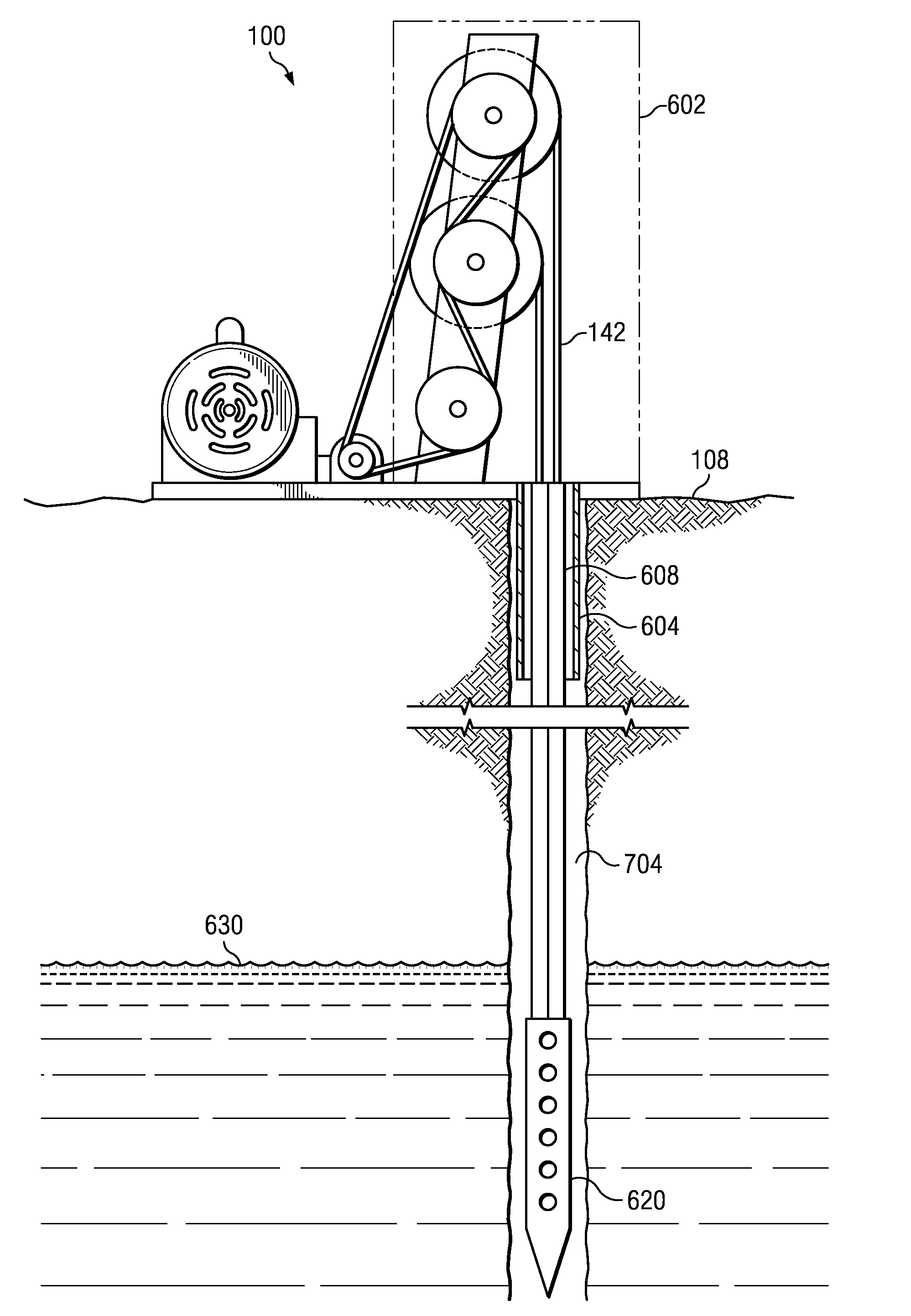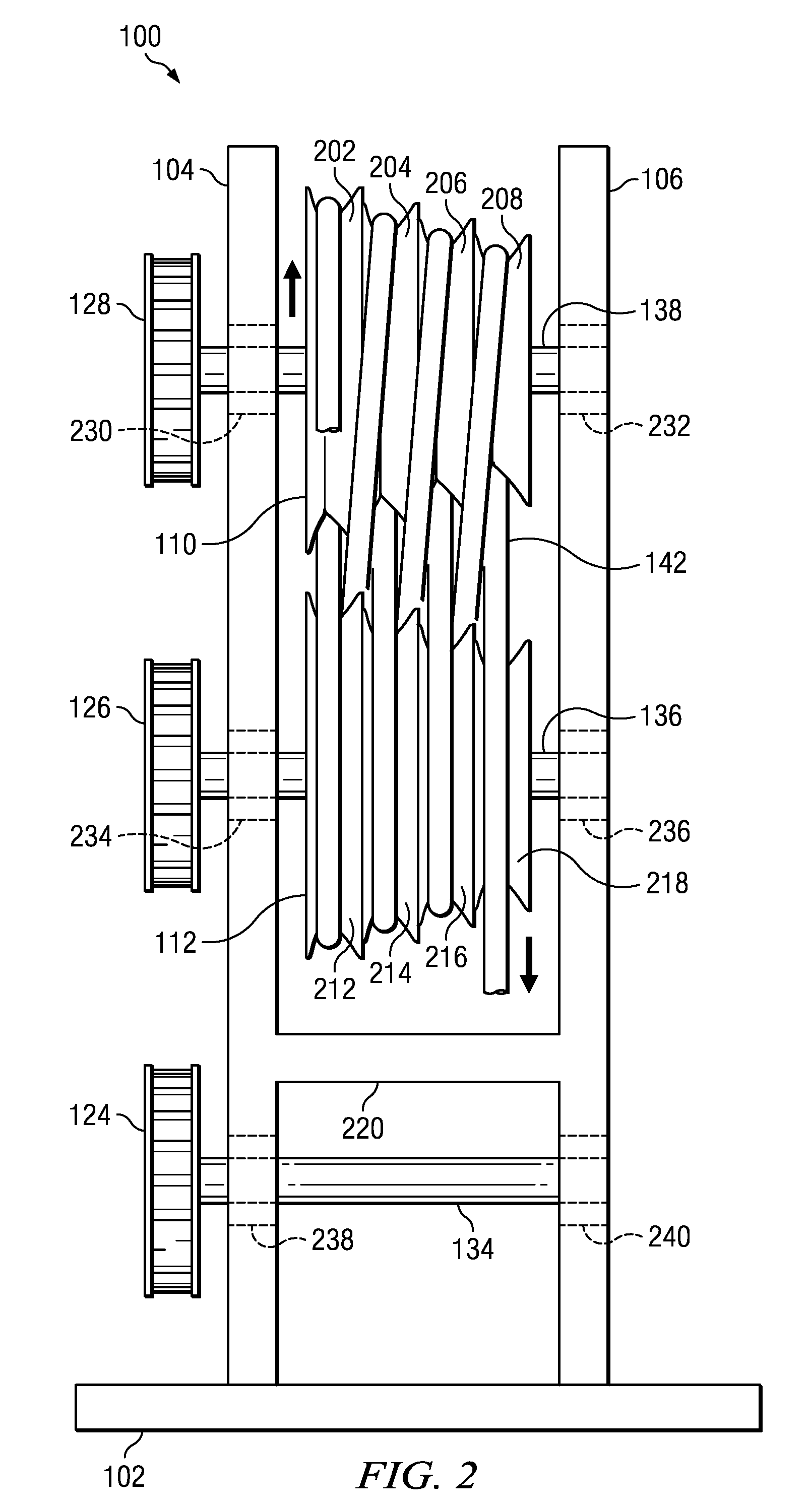Drive Head Assembly for a Fluid Conveyor System
a technology of fluid conveyor and drive head, which is applied in the direction of positive displacement liquid engine, gearing, borehole/well accessories, etc., can solve the problems of reducing the useful life of the conveyor, affecting the efficiency of the conveyor, and affecting the traction of the sheaves, so as to maximize the contact of the conveyor and improve the traction between the sheaves and the conveyor. , the effect of maximizing the conta
- Summary
- Abstract
- Description
- Claims
- Application Information
AI Technical Summary
Benefits of technology
Problems solved by technology
Method used
Image
Examples
Embodiment Construction
[0024]In the descriptions that follow, like parts are marked throughout the specification and drawings with the same numerals, respectively. The drawing figures are not necessarily drawn to scale and certain figures may be shown in exaggerated or generalized form in the interest of clarity and conciseness.
[0025]FIGS. 1, 2 and 6 show a preferred embodiment of drive head 100. Base 102 provides a connecting platform for motor 116, transmission 118, and frames 104 and 106. In the preferred embodiment, base 102 is mounted to ground surface 108 via a concrete slab. Brace 220 stabilizes frame 104 to frame 106. Frames 104 and 106 are parallel to each other and extend from base 102 at angle A. Angle A may be any angle, including perpendicular. In the preferred embodiment, angle A ranges from 80° to 85°.
[0026]In the preferred embodiment, motor 116 generates up to 10 horsepower and is powered by fuel or electricity. However, motor 116 may be of any size or type. The size of motor 116 may be al...
PUM
 Login to View More
Login to View More Abstract
Description
Claims
Application Information
 Login to View More
Login to View More - Generate Ideas
- Intellectual Property
- Life Sciences
- Materials
- Tech Scout
- Unparalleled Data Quality
- Higher Quality Content
- 60% Fewer Hallucinations
Browse by: Latest US Patents, China's latest patents, Technical Efficacy Thesaurus, Application Domain, Technology Topic, Popular Technical Reports.
© 2025 PatSnap. All rights reserved.Legal|Privacy policy|Modern Slavery Act Transparency Statement|Sitemap|About US| Contact US: help@patsnap.com



